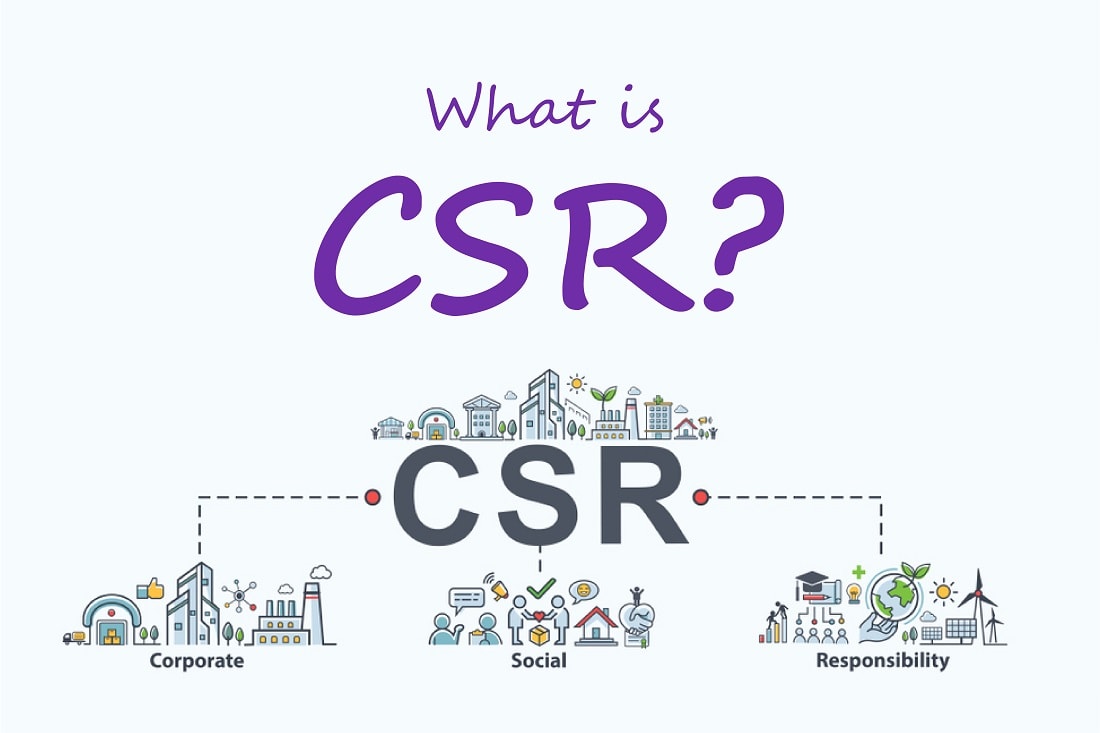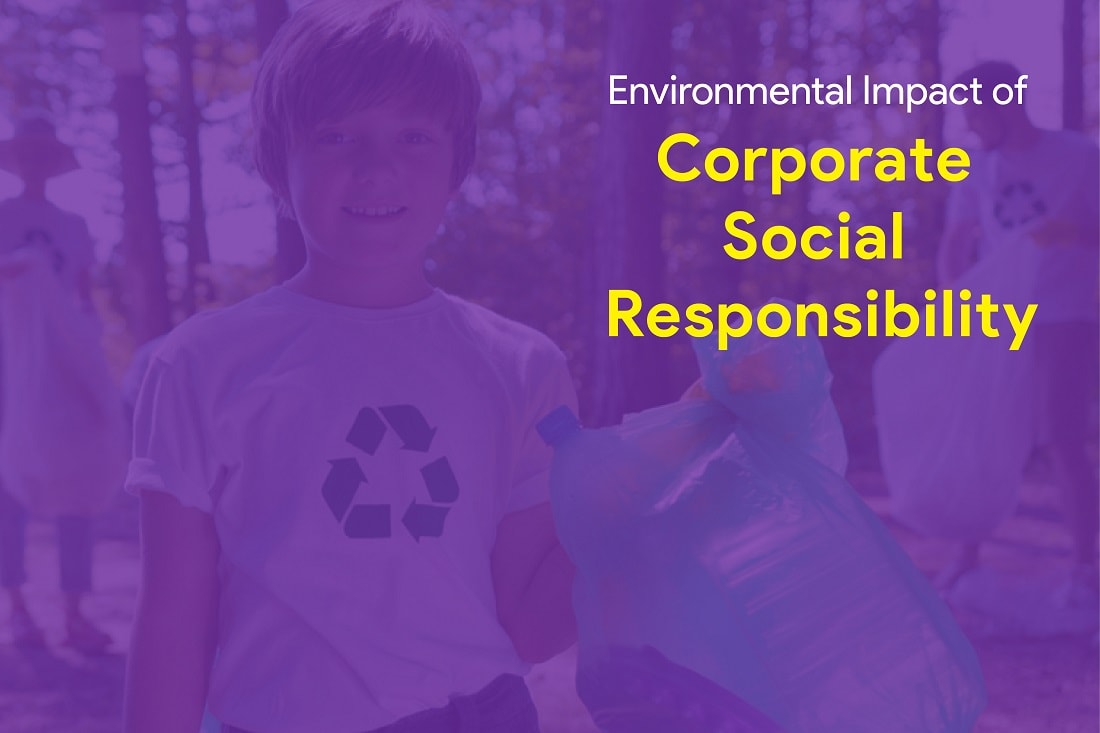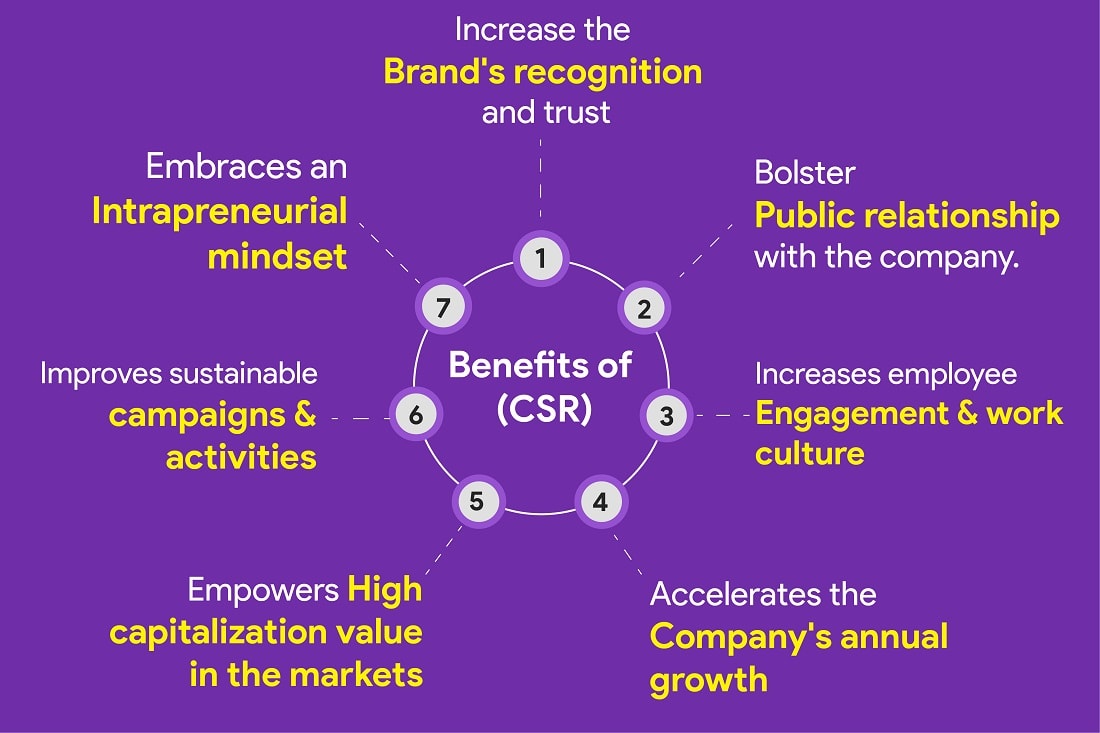Introduction to CSR (Corporate social responsibility)
In today’s world, consumers are more conscious about buying the products they need. But, more than just purchasing the products, customers look for information about the products, such as how & where the product has been manufactured. Many more people are searching for products with recycling badges and engaging with the brand to learn about the product’s post-consumer activities.
To provide sustainable products, most brands adopt eco-friendly product designs and packaging as per corporate social responsibility. The most significant aspect of Corporate social responsibility is to lower the waste generation rate and increase the recycling methodologies to repurpose products again, thereby protecting the environment with eco-friendly living conditions.
In addition to manufacturing companies, corporate social responsibility encompasses all brands, service-based companies, and digital-enabled services, as well as all GMCG brands responsible for the environmental impact of their products once they have been used.
Corporate social responsibility refers to the role of businesses in the communities where they operate. The theory is that a company with a conscious practice of CSR can build stronger relationships with its customers and employees while improving its environment and addressing issues before they become problems.
What is CSR?

Corporate social responsibility (CSR) is a social responsibility in which a business assumes the role of positive citizen or stakeholder by positively affecting environments, communities, and stakeholders.
Corporate social responsibility (CSR) is a set of actions and policies designed to create benefits both within the corporate entity and, because of its nature, beyond. CSR can be considered an ongoing commitment by companies to positively impact society through their operations and relationships with their customers, employees, community, and other stakeholders.
Maintaining sustainable Corporate social responsibility (CSR) practices helps to leverage the brand’s identity, make it relatable for the customers, build a sustainable community of audiences and a lot more.
Importance of recycling
Waste management is closely interlinked with the growth of the human population. With each passing day, the human population is growing rapidly. With that, the amount of waste so produced is also increasing manifolds. The more waste production, the more is the amount of space required to dump this waste.
Recycling is a reprocessing by which waste is converted into new materials and products. Recycling limits the rate of pollution and greenhouse gas emissions due to the reduction of natural resources that would otherwise be lost or depleted in landfills. Recycling has a very low environmental impact compared to manufacturing new products using virgin raw materials or natural resources.
Recyclable trash is collected at treatment plants run by different municipalities, companies or even private individuals. It has become significant for brands, manufacturers, and producers to collect and recycle the waste they produce. Recycling waste is not just a simple process, it’s a social responsibility and an excellent opportunity to save on the costs of disposing of, transporting and processing waste.
How can businesses improve their social responsibility?
Corporate social responsibility is the method that a company takes responsibility for its actions and impacts on employees and communities. CSR includes how your company conducts business, manages its impact on the environment, treats its employees, and supports community activities that solve social problems such as poverty or discrimination.
The corporate social responsibility of a brand demonstrates that your organization is doing the right thing. It encompasses good business practices and ethical standards that encourage high standards of conduct. Check out the 07 fundamentals to increase your brand’s visibility through social liabilities.
07 Tips to increase your brand’s corporate social responsibility
- Create a Framework for your business ethics.
- Be more transparent & traceable in everything your business does
- Build a robust Socio-economic Community
- Focus on improving the brand’s equity
- Incorporate sustainable actions with your brand’s mission & value
- Conduct social awareness programs or events periodically
- Volunteer your business to every circularity movement
In the past, many companies have been criticized for not caring about the environment and its impact on the community. However, today’s consumers want to be convinced of a company’s commitment to the environment by adopting improved environmental practices.
By incorporating environmental practices into its operations, the company demonstrates that it cares about the community, the planet and the future. This could help to solidify customer loyalty in a positive atmosphere.
Social responsibility is an integral part of any enterprise. There is no one way to embrace social responsibility, but there are a set of commonly accepted practices that all businesses should be integrating into their culture and operations. Customers will reward companies prioritizing CSR as a mandatory activity in operating their firm.
Environmental impacts of Corporate social responsibility (CSR)

Environmental CSR is about being a responsible corporate citizen and being an example to others by fulfilling the requirements of your legal obligations, developing, manufacturing and selling safe and efficient products, and finding new methodologies to reduce waste, energy utilization, pollution and water consumption. The environmental aspects of CSR can be incorporated into the company’s strategy in a variety of ways, such as
Boosting waste value chain efficiency
Reducing waste and boosting supply chain efficiency is key to reducing a company’s carbon footprint. A strong supply chain may provide specialized products that are on-demand and able to reduce waste. In addition, leveraging the latest technologies and innovations can help reduce costs, encourage more efficient production practices, and build relationships with customers at critical junctures in the supply chain.
Cradle-to-Cradle design & development
In the design world, closed-loop manufacturing and cradle-to-cradle design are two critical sustainable strategies that aim to eliminate waste. Both approaches are designed to break down products into their essential components, reducing pollution and environmental toxicity.
Some businesses may also make technological changes to reduce their impact on the climate, for example, by installing solar panels or investing in alternative energy sources. This is sometimes known as carbon capture and storage (CCS). Greenhouse gas emissions that are avoided in this way can be offset by generating carbon credits from renewable resources such as wind hubs, solar panels or hydroelectricity.
Eliminating packaging waste
The world is moving towards more sustainable packaging. The problem with single-use packaging is that it produces waste every time it’s used, which can create a negative environmental impact. Companies can save money and improve the environment by opting for more sustainable products like glass, recycled plastic or aggregates over traditional plastics.
The packaging market is changing rapidly. As a result, many brands are transformed into eco-friendly alternatives to plastic, such as glass, recycled plastic or aggregates.
Benefits of Corporate social responsibility
Many companies today are striving to be responsible corporate citizens. They want to demonstrate leadership, pursue social goals and increase their bottom line by helping society in many ways. This is a new era of corporate responsibility and good business practice, with your organization as an active participant in shaping the changing global economy.
Only by leveraging our global reach and culture of innovation can we empower people everywhere to realize their dreams. Moreover, by fostering a sustainable relationship with society, we’re helping create a more equitable and safe world for everyone.
To build more sustainable businesses, companies need to give back to nature by conserving natural resources and using renewable energy, but there are many other ways they can do so.
Some of the critical benefits of Corporate social responsibility for a brand are

The Bottom line
Corporate social responsibility (CSR) programs help boost revenue and support your brand’s image. In addition, by engaging employees and customers, your CSR initiative can significantly impact the company and the world at large.
Creating and participating in CSR initiatives is a crucial business decision and a win-win for all parties. By highlighting your company’s core values, you create trust among employees, customers, and society. This will ensure success in growing your organization and building a strong business culture.
By making the right choices and taking action, Corporate social responsibility activities can positively impact its employees, customers, community and overall environment.
